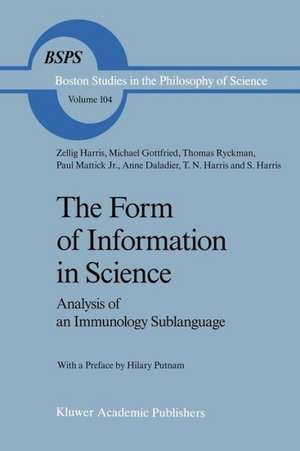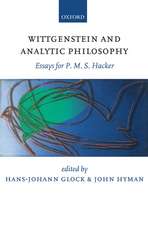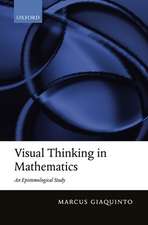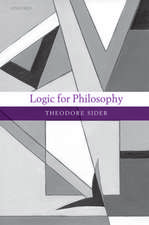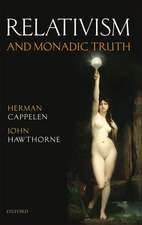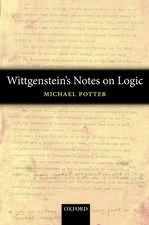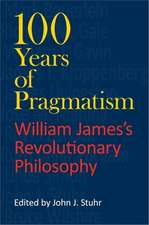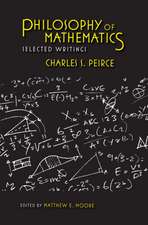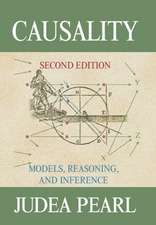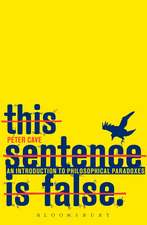The Form of Information in Science: Analysis of an Immunology Sublanguage: Boston Studies in the Philosophy and History of Science, cartea 104
Autor Z. Harris, Michael Gottfried, Thomas Ryckman, Anne Daladier, Paul Matticken Limba Engleză Paperback – 3 noi 2011
| Toate formatele și edițiile | Preț | Express |
|---|---|---|
| Paperback (1) | 1231.78 lei 6-8 săpt. | |
| SPRINGER NETHERLANDS – 3 noi 2011 | 1231.78 lei 6-8 săpt. | |
| Hardback (1) | 1238.23 lei 6-8 săpt. | |
| SPRINGER NETHERLANDS – 31 dec 1988 | 1238.23 lei 6-8 săpt. |
Din seria Boston Studies in the Philosophy and History of Science
- 18%
 Preț: 944.19 lei
Preț: 944.19 lei - 15%
 Preț: 646.75 lei
Preț: 646.75 lei - 15%
 Preț: 646.75 lei
Preț: 646.75 lei - 15%
 Preț: 699.28 lei
Preț: 699.28 lei - 18%
 Preț: 736.50 lei
Preț: 736.50 lei -
 Preț: 500.02 lei
Preț: 500.02 lei - 15%
 Preț: 643.16 lei
Preț: 643.16 lei - 15%
 Preț: 650.69 lei
Preț: 650.69 lei - 15%
 Preț: 634.18 lei
Preț: 634.18 lei - 15%
 Preț: 642.68 lei
Preț: 642.68 lei -
 Preț: 391.40 lei
Preț: 391.40 lei -
 Preț: 383.33 lei
Preț: 383.33 lei - 18%
 Preț: 944.19 lei
Preț: 944.19 lei - 18%
 Preț: 955.56 lei
Preț: 955.56 lei - 15%
 Preț: 643.65 lei
Preț: 643.65 lei -
 Preț: 392.75 lei
Preț: 392.75 lei - 18%
 Preț: 1229.10 lei
Preț: 1229.10 lei - 18%
 Preț: 1238.23 lei
Preț: 1238.23 lei - 18%
 Preț: 951.29 lei
Preț: 951.29 lei - 18%
 Preț: 1223.25 lei
Preț: 1223.25 lei - 18%
 Preț: 1225.79 lei
Preț: 1225.79 lei - 18%
 Preț: 1226.42 lei
Preț: 1226.42 lei - 18%
 Preț: 1236.82 lei
Preț: 1236.82 lei - 15%
 Preț: 644.49 lei
Preț: 644.49 lei - 18%
 Preț: 1231.78 lei
Preț: 1231.78 lei - 15%
 Preț: 644.30 lei
Preț: 644.30 lei - 18%
 Preț: 957.62 lei
Preț: 957.62 lei - 18%
 Preț: 1222.49 lei
Preț: 1222.49 lei - 18%
 Preț: 947.50 lei
Preț: 947.50 lei - 18%
 Preț: 1833.95 lei
Preț: 1833.95 lei - 18%
 Preț: 1227.99 lei
Preț: 1227.99 lei - 18%
 Preț: 947.35 lei
Preț: 947.35 lei
Preț: 1231.78 lei
Preț vechi: 1502.17 lei
-18% Nou
Puncte Express: 1848
Preț estimativ în valută:
235.78€ • 256.19$ • 198.18£
235.78€ • 256.19$ • 198.18£
Carte tipărită la comandă
Livrare economică 21 aprilie-05 mai
Preluare comenzi: 021 569.72.76
Specificații
ISBN-13: 9789401077774
ISBN-10: 9401077770
Pagini: 616
Ilustrații: XVII, 589 p.
Dimensiuni: 155 x 235 x 32 mm
Greutate: 0.85 kg
Ediția:1989
Editura: SPRINGER NETHERLANDS
Colecția Springer
Seria Boston Studies in the Philosophy and History of Science
Locul publicării:Dordrecht, Netherlands
ISBN-10: 9401077770
Pagini: 616
Ilustrații: XVII, 589 p.
Dimensiuni: 155 x 235 x 32 mm
Greutate: 0.85 kg
Ediția:1989
Editura: SPRINGER NETHERLANDS
Colecția Springer
Seria Boston Studies in the Philosophy and History of Science
Locul publicării:Dordrecht, Netherlands
Public țintă
ResearchCuprins
1 / Reducing Texts to Formulas.- 1. Seeking Canonical Forms.- 2. Analysis of Word Combinations.- 3. Details of the Analysis.- 2 /Result: Formulas of Information.- 1. Meta-science Segments.- 2. Word Classes.- 3. Word Subclasses.- 4. Word Modifiers and Local Operators.- 5. Summary of Word Classes.- 6. Sentence Types.- 7. Sentence Formulas.- 3 / From Structure to Information.- 1. Differences in Structure and Differences in Information.- 2. Formula-based Critique of Information.- 3. Sublanguage Properties.- 4. Further Work.- 5. Toward the Grammar of Science.- 4 / Sublanguage Formulas as Information Units.- 1. Normal Form Linearity: Projection and the Use of the Arrow.- 2. Local Operator Modifiers.- 3. The Classifier ‘Response’.- 4. Correlations between W and V Operators.- 5. Sublanguage Homonymities.- 6. Extending Sublanguage Grammar.- 7. Information Structure and the ‘r’ Operator.- 5 / The Apparatus of Sublanguage Transformations.- 1. A Preliminary Survey of Sublanguage Transformations.- 2. Relinearization.- 3. Reconstruction of Repetitional Zeroing.- 4. Reconstruction of Low-information Zeroing.- 5. Relative Clause.- 6. Larger Transformations.- 7. Comparative.- 8. Quantifiers and the Negative.- 9. Further Regularization.- 6 / Extending the Analysis: The Informational Environment of the Science Sentences.- 1. Introduction.- 2. Word Classes and Sentence Types.- 3. Conclusions.- 7 / Information Units in a French Corpus.- 1. Information Grammar as a Pattern-matcher on Sentences and Linearization Rules to Produce Sentences from Informational Units.- 2. An Applicative Grammar of Informational Units.- 3. Using the Grammar of Informational Units as a Pattern-matcher for a Direct Recognition of Informational Units.- 4. Linearization Rules: Producing Sentences Out ofUnits.- 5. Questions Which Are Not Fully Treated Here.- 6. Conclusion and Applications of the Method Presented Here.- 8 / The Cellular Source of Antibody: A Review.- 1. Background.- 2. Early Observations and Experiments on the Macrophage in Relation to Antibody Formation.- 3. Early Studies on the Lymphatic System in the Production of Antibodies.- 4. Lymphocyte or Plasma Cell as the Antibody-synthesizing Cell.- 5. Correlation of Tissue-extract Antibody with Microscopic Observations.- 6. Extraction of Cells.- 7. Release of Antibody from Tissues and from Cells Cultivated in Vitro.- 8. Studies Involving Aggregation of Bacterial Cells Around Tissue Cells.- 9. Histochemical Staining for Nucleic Acid in Lymph Nodes in Relation to Formation of Antibodies.- 10. Fluorescence Staining for Antibody.- 11. Transfer of Cells of Lymph Nodes, Lymph and Spleen.- 12. Resolution of the Problem: Electron Microscopic Studies of Antibody-producing Cells.- Appendix 1 / Tables of Immunology Reports: English.- Appendix 2 / Tables of Immunology Reports: French.- Appendix 3 / Notes to the Tables of the English Articles.- List of Symbols.
